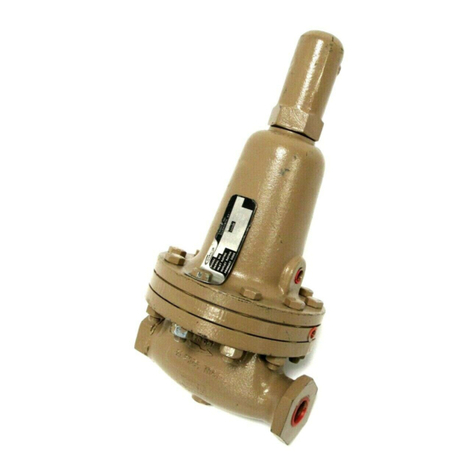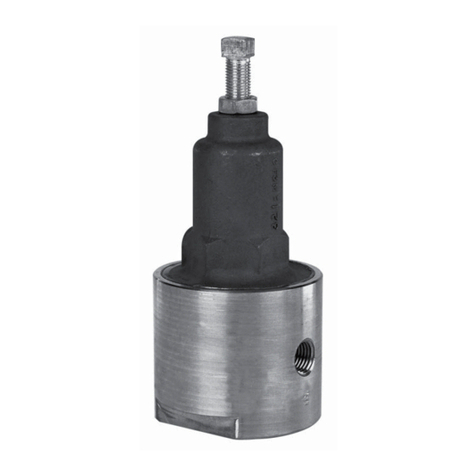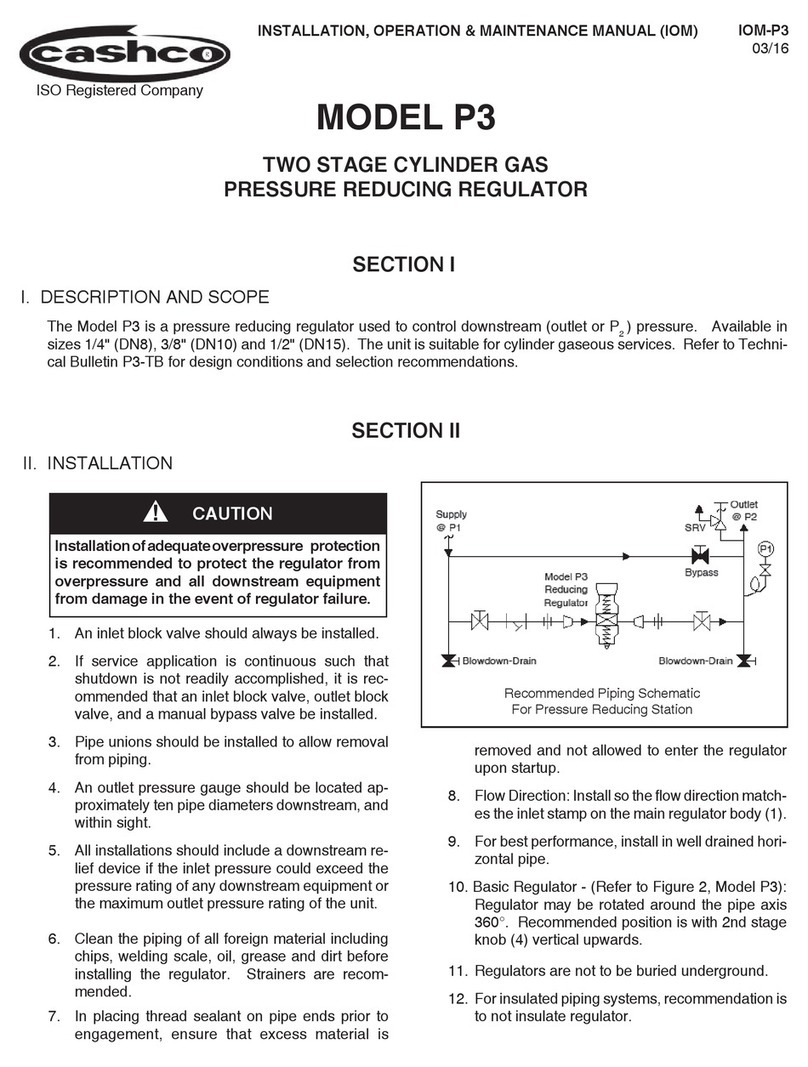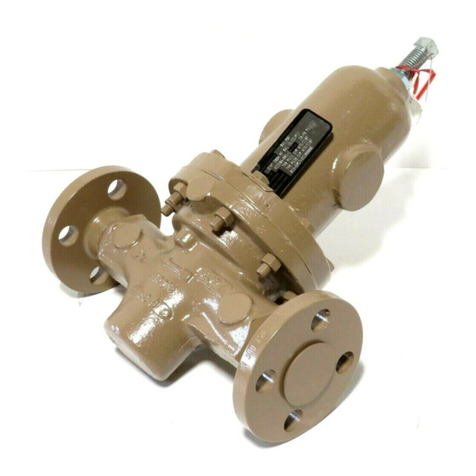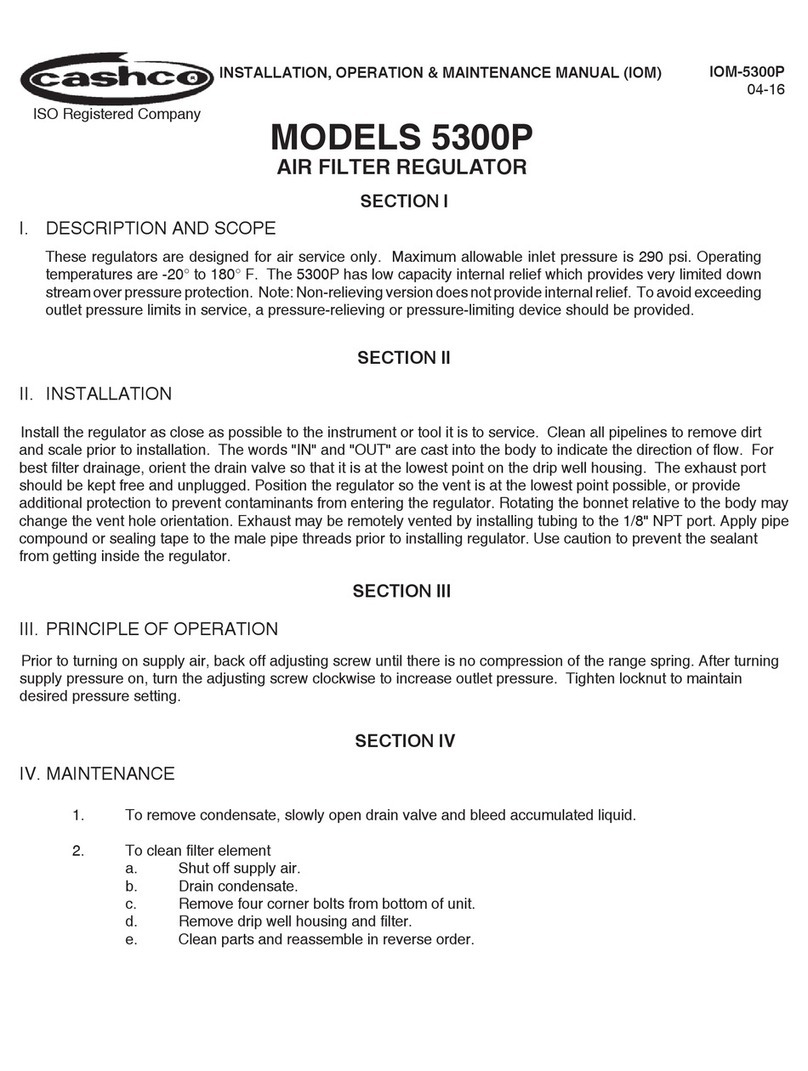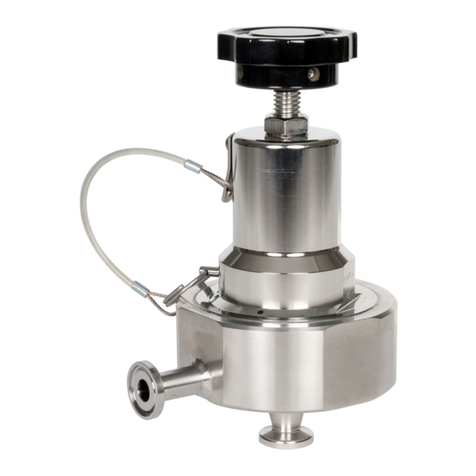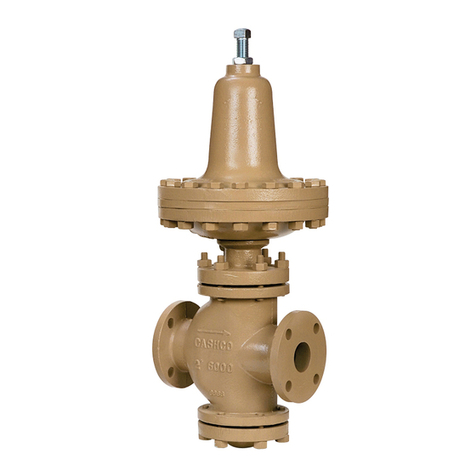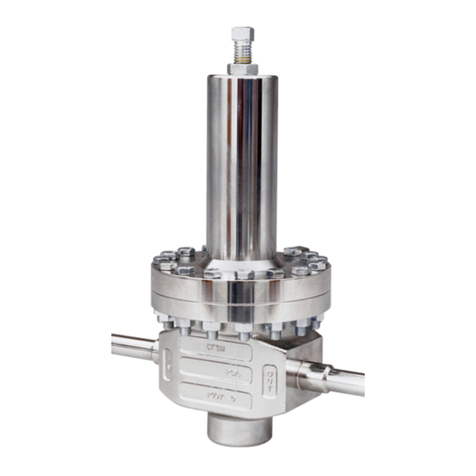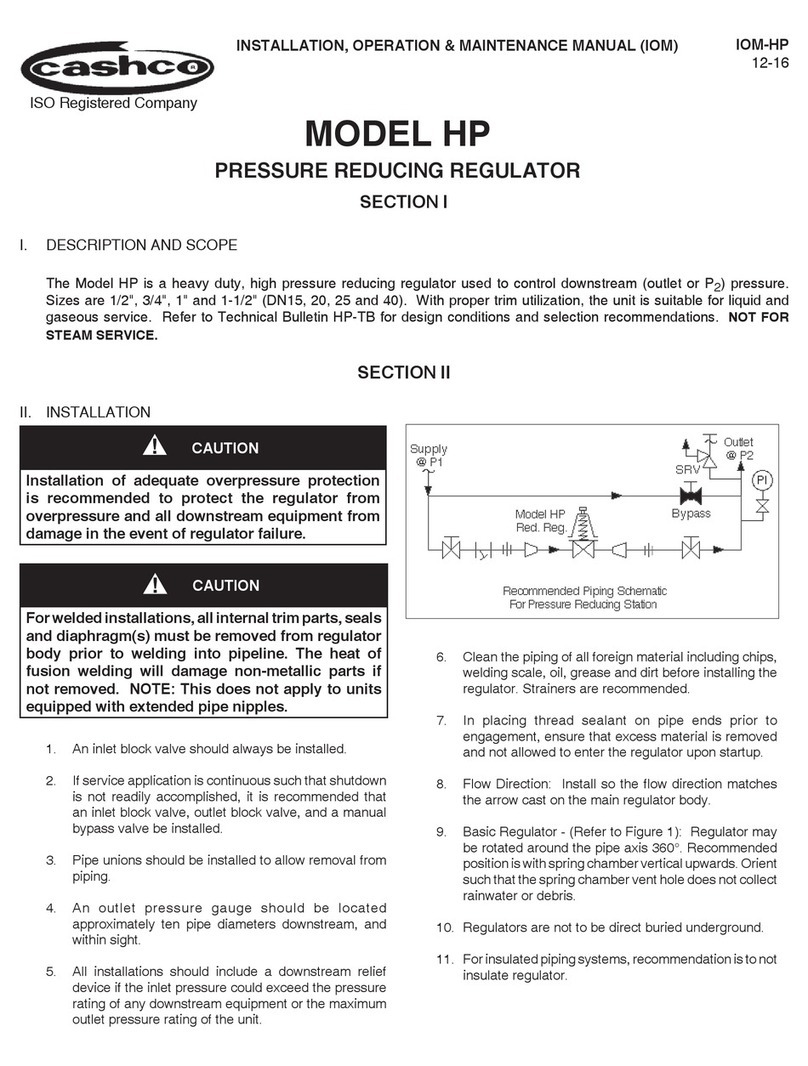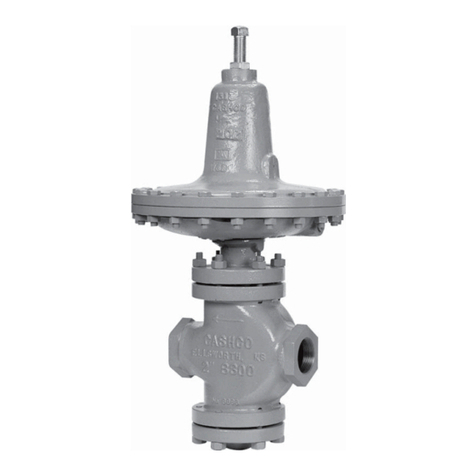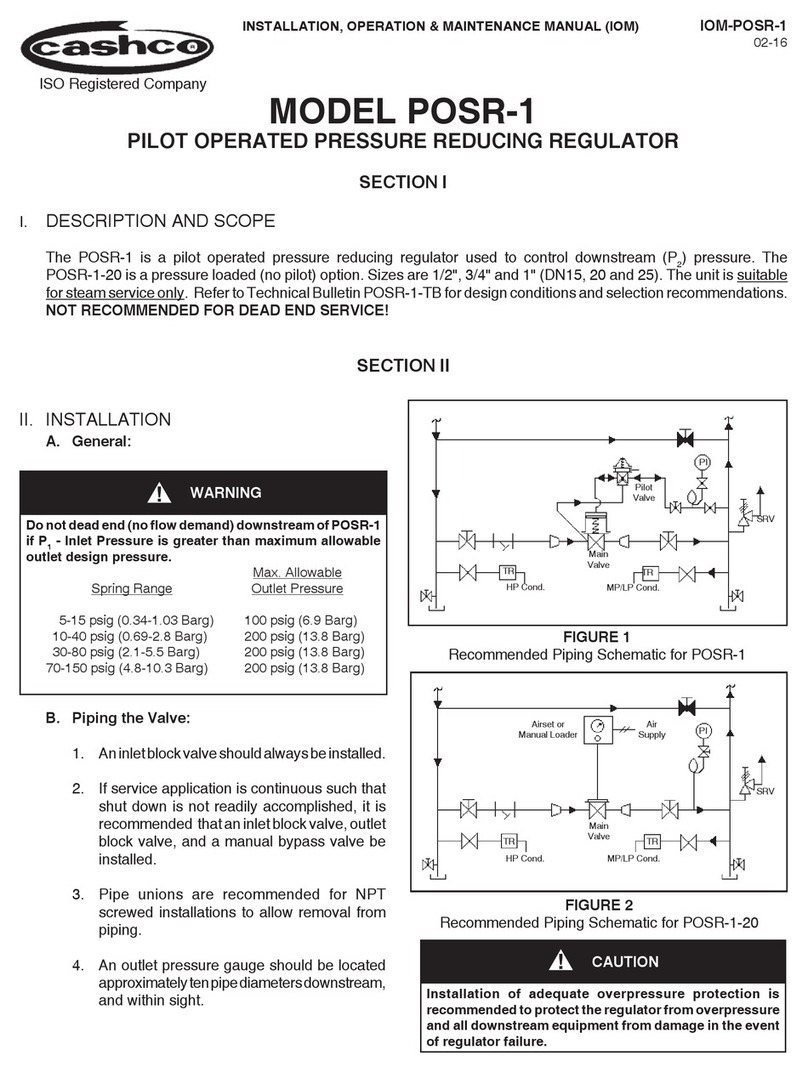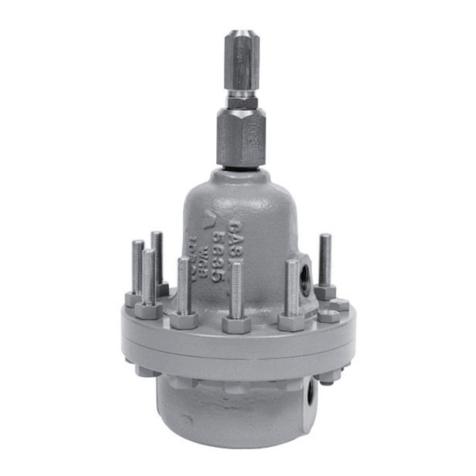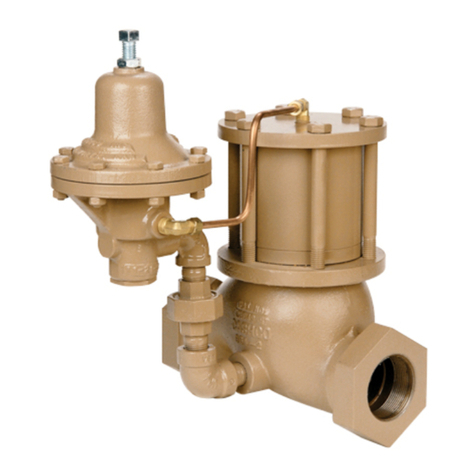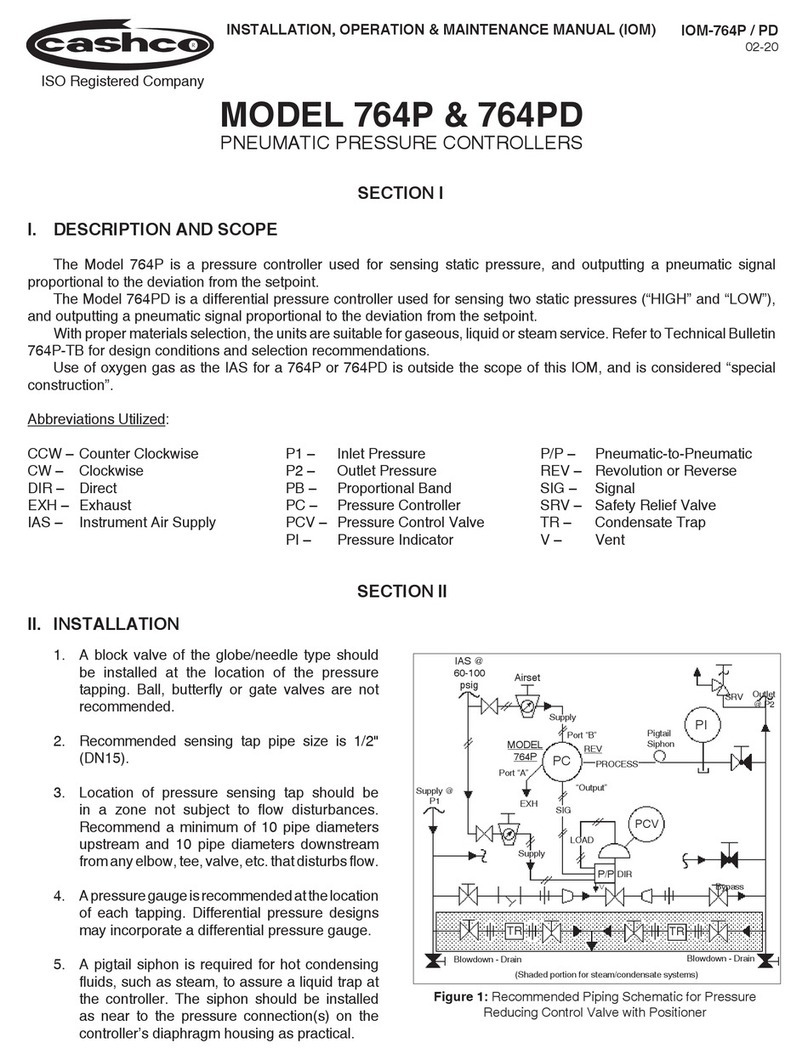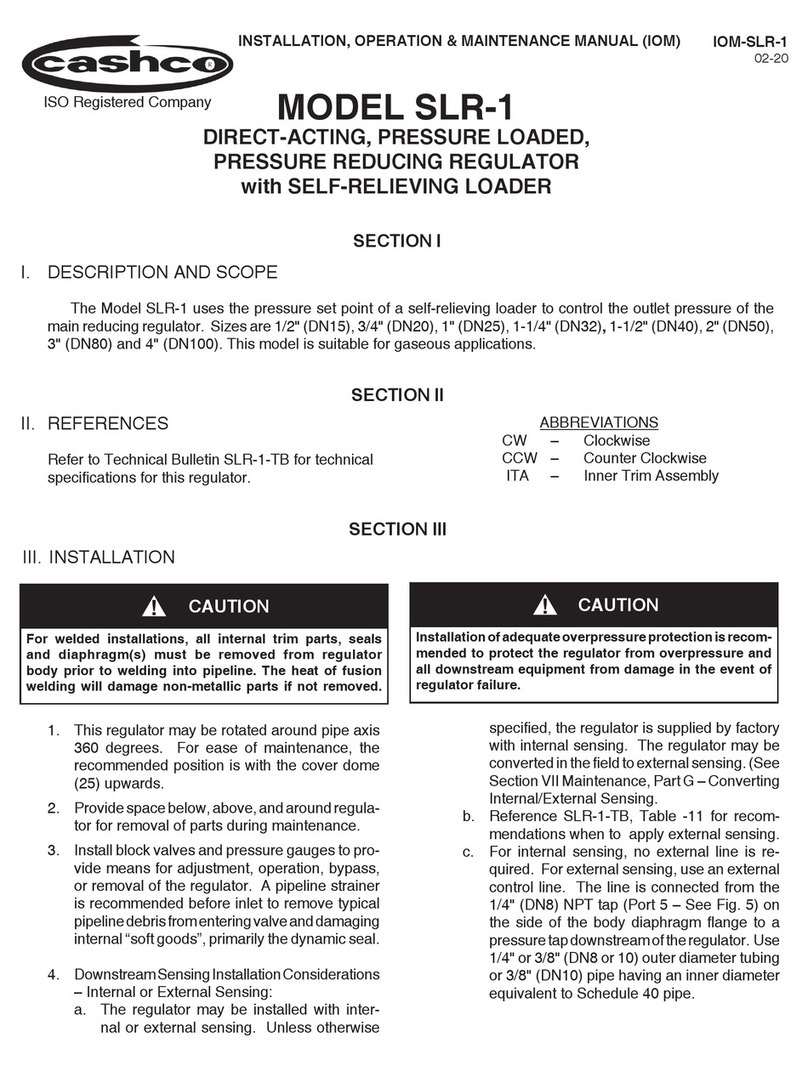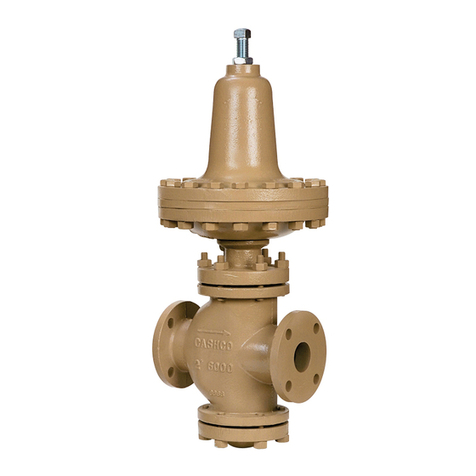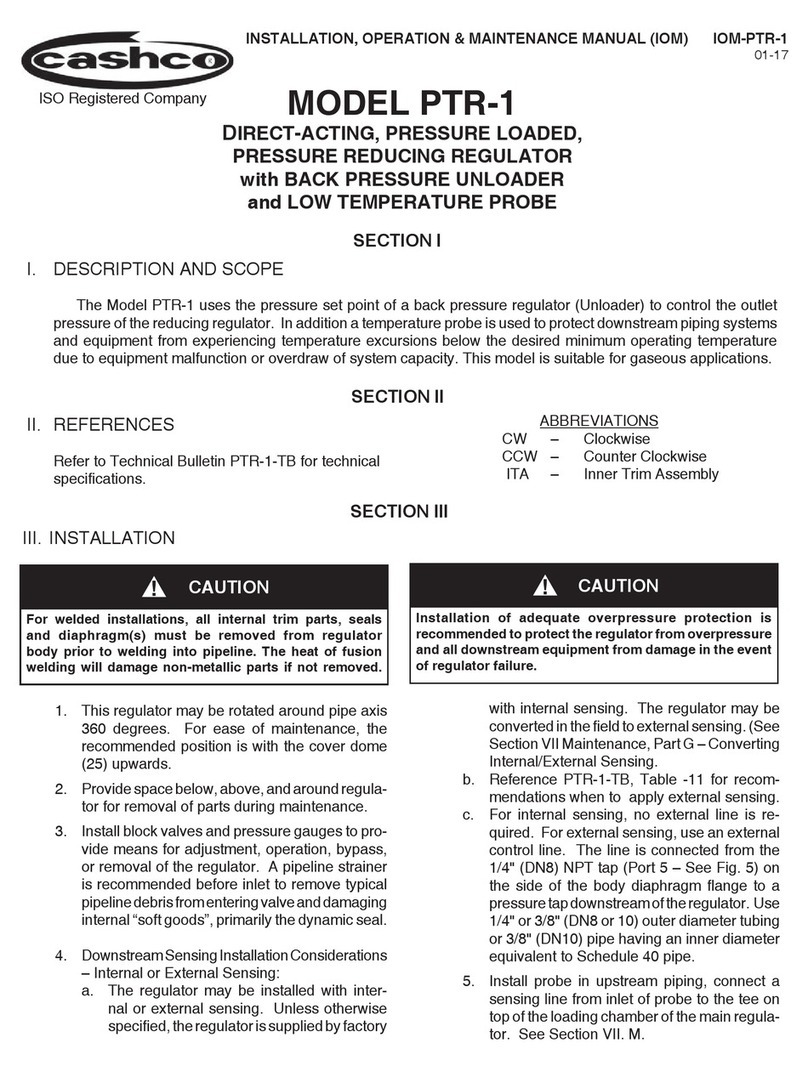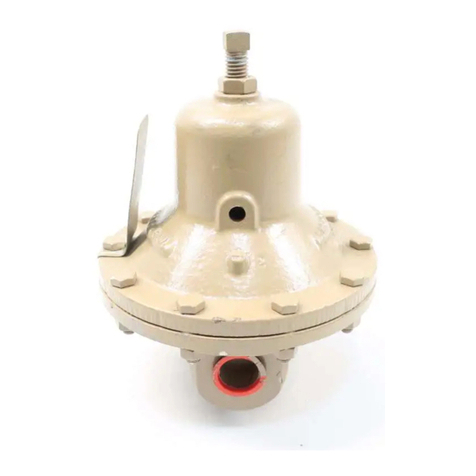
IOM-DA68
“cut” piston ring seal (27.5). Using
thumbs, work the piston ring seal
(27.5) into the groove of the valve plug
(20). Repeat this procedure with a
second piston ring seal (27.5). Orient/
rotate the "splits" in piston ring seals
(27.5) 180° across from each other.
c. Type UC:
1. Stretch u-cup seal (27.3) over upper
circumference of valve plug (20), tak-
ing care not to “cut” u-cup seal (27.3)
on the protruding shelf that is part of
the valve plug's (20) groove. Ensure
that the u-cup seal (27.3) is oriented
with the center-open-upwards as
shown in Figure 1, as the u-cup seal
(27.3) depends upon the P1-Inlet
Pressure to pressure activate the seal
for proper sealing action.
d. Type NO:
1. For “standard” flow direction applica-
tions, it is not absolutely required that
a dynamic side seal (27) be installed.
(When included with the dynamic seal
(27), better guiding of valve plug (20)
results.) Type “NO” dynamic seal (27)
means NO dynamic seal.
2. The more common “Reverse” flow
direction always requires a dynamic
side seal (27).
7. Place fluid compatible thread anti-seize,
Locktite Corp., "Nickel Anti-Seize", or equal
on threaded portion of diaphragm cap screw
(7), sizes 1-1/4" and 1-1/2"; or, threaded post
portion of valve plug (20), sizes 1/2" – 1" and
2-1/2" – 4". (NOTE: Valves cleaned for oxy-
gen service should use fisher Scientific Co.,
"Fluorolube GR-362", or equal.)
8. Body sizes 2-1/2" thru 4":
a. Place o-ring lower stem seal (14.3) over
upper-end of plug (20) and into groove on
plug (20).
b. Place properly oriented piston/guide bear-
ing (13) over upper-end of plug (20) and
into position on plug (20).
c. Place o-ring middle seal (14.2) over upper-
end of plug (20) and into groove of piston/
guide bearing (13).
9. Body sizes 1/2 thru 2":
Place new o-ring middle stem seal (14.2) into
groove of valve plug (20) upper surface.
10. Position lower diaphragm pusher plate (10)
on/over upper end of valve plug (20) properly
oriented. For composition diaphragm construc-
tion the “tongue and groove” “ridge” should
be on upper side, “flat” side downwards. For
metal diaphragm construction the “rounded”
surface of the lower diaphragm pusher plate
(10) should be on upper side, “flat” side down-
wards.
11. For composition diaphragm construction, place
new o-ring upper stem seal (14.1) on/over
upper end of valve plug (20) and into groove
of lower diaphragm pusher plate (10).
12. For metal diaphragm construction, place com-
patible gasket sealant on both sides and place
new lower pusher plate gasket (14.4) on/over
upper end of valve plug (20) and onto lower
diaphragm pusher plate (10). (Gasket sealant
is Federal Process Corp. "Gasoila", or equal.)
13. Position new diaphragm(s) (9) on/over upper
end of valve plug (20). NOTE: For multiple
diaphragms (9) that include TFE material, the
TFE should be on the wetted side; for 6-ply
elastomeric TFE diaphragm (9), stackup is
TFE-TFE-HK-HK-TFE-TFE, beginning with
the lower wetted diaphragm (9) first.
14. Position upper diaphragm pressure plate (8)
on/over upper end of valve plug (20) prop-
erly oriented. For composition diaphragm
construction the "tongue and groove" "ridge"
should be on lower side, "flat" side upwards.
For metal diaphragm construction the "round-
ed" surface of the upper diaphragm pressure
plate (8) should be on lower side, "flat" side
upwards.
15. a. Body sizes 1/2" thru 1": Engage diaphragm
locknut (7) to threaded post portion of
valve plug (20) and torque to 60-70 ft-lbs.
by rotating CW.
b. Body Sizes 1-1/4" and 1-1/2": Insert
anti-seize coated diaphragm cap screw
(7) through stacked parts (8, 9, 10, 14.1,
14.4) and into upper end of valve plug (20).
Torque-tighten diaphragm cap screw (7)
to 120-130 ft-lbs.
c. Body Sizes 2-1/2" thru 4": Engage dia-
phragm locknut (7) to threaded post of
valve plug (20) and wrench-tighten firmly.
While restraining valve plug (20) from
rotating by torque wrench on upper end
3/4" hex, use another wrench to tighten
diaphragm locknut (7) to a torque of 180-
200 ft-lbs.
